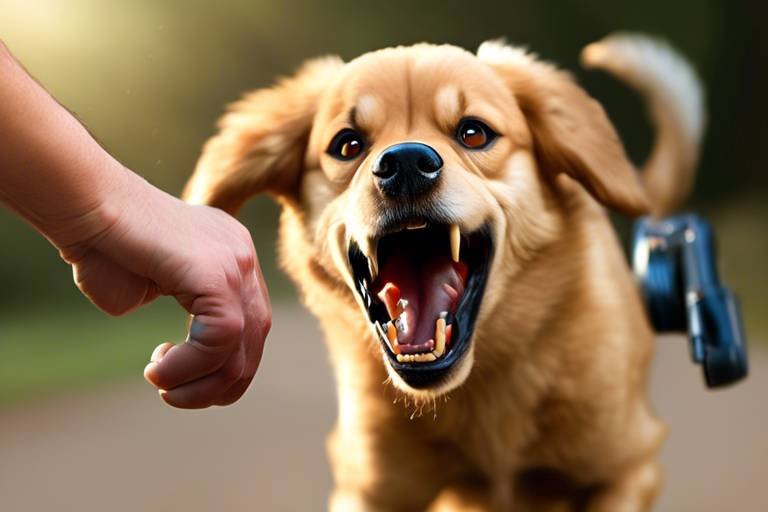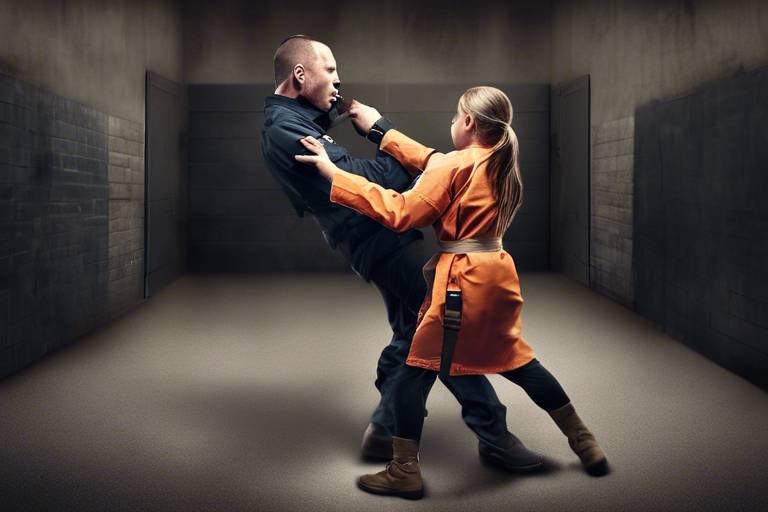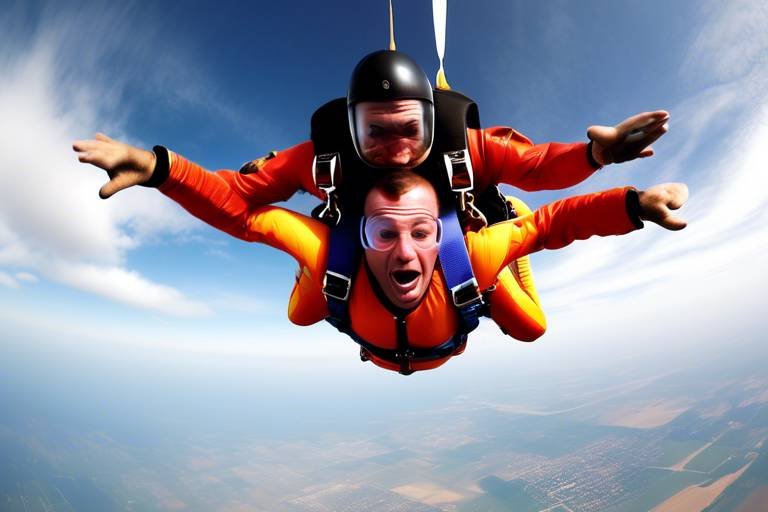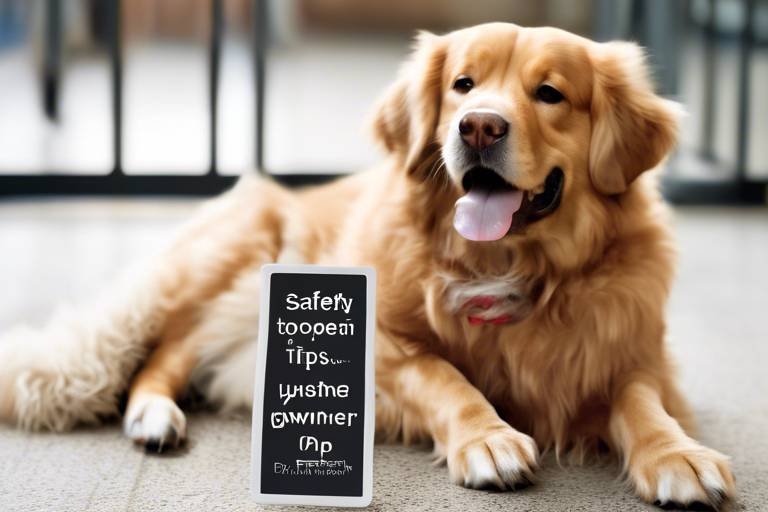Dog Attacks: A Guide to Staying Safe
Dog attacks can be a frightening experience, not just for the victims but also for the owners and the community at large. Understanding how to stay safe around dogs is essential, especially since many people encounter dogs on a daily basis. This guide aims to provide you with vital information on preventing dog attacks, recognizing dog behavior, and knowing what to do if you ever find yourself in a dangerous situation. By staying informed and proactive, you can protect yourself and others while enjoying the companionship of our furry friends.
Recognizing signs of aggression and understanding canine body language can help prevent dog attacks. Dogs communicate primarily through their body language, and being able to interpret these signals is crucial. For instance, a dog that is feeling threatened may display behaviors such as growling, baring its teeth, or raising its hackles. Additionally, a dog that is anxious might cower, tuck its tail between its legs, or avoid eye contact. By learning to identify these common behavioral cues, you can take steps to avoid potential conflicts. Remember, just like humans, dogs have their own personalities, and understanding them is key to ensuring a safe environment.
Taking proactive measures can significantly reduce the risk of dog attacks. It's not just about avoiding aggressive dogs; it's also about creating a safe atmosphere for everyone involved. Here are some strategies for both dog owners and the public:
- Educate yourself: Learn about dog breeds and their typical behaviors.
- Supervise interactions: Always supervise children when they are around dogs.
- Respect boundaries: Never approach a dog that is tied up or behind a fence.
By implementing these strategies, you can help ensure safety around dogs and reduce the likelihood of an attack.
Teaching children how to interact safely with dogs is crucial. Kids often don’t understand the nuances of dog behavior, and their excitement can sometimes lead to misunderstandings. Here are some effective ways to educate kids on approaching and handling dogs:
- Teach them to ask first: Always ask the owner for permission before petting a dog.
- Demonstrate calm behavior: Show children how to approach a dog quietly and slowly.
- Explain the importance of personal space: Make sure they understand that dogs need their space just like people do.
Learning the correct way to approach a dog can prevent misunderstandings. Always approach a dog from the side, rather than head-on, as this can be less intimidating for the animal. Extend your hand slowly and allow the dog to sniff you before attempting to pet it. This respectful greeting can foster a positive interaction and decrease the chances of an aggressive response.
Identifying warning signs in dogs can help avoid dangerous situations. Look for behaviors such as:
- Stiff body posture
- Growling or barking
- Averting gaze or turning away
If you notice any of these signs, it’s best to give the dog space and avoid interaction. Remember, a dog that feels threatened is more likely to react defensively.
Dog owners play a vital role in preventing attacks. It's their responsibility to ensure their pets are well-socialized and controlled. This means providing adequate training and socialization from a young age, as well as keeping their dogs on a leash in public spaces. Responsible ownership not only protects the community but also enhances the quality of life for the dog.
Knowing how to react during a dog attack can save lives. If you find yourself confronted by an aggressive dog, it’s crucial to stay calm and avoid making sudden movements. Instead of running away, which may trigger the dog's chase instinct, try to stand still and avoid direct eye contact. If the dog approaches, use a firm voice to command it to go away. In situations where the dog attacks, protect your face and neck with your arms and try to put something between you and the dog, like a backpack or jacket.
Understanding defensive techniques can be crucial in an attack situation. Here are some effective strategies to use:
- Stay calm and avoid sudden movements.
- Use an object to shield yourself.
- Back away slowly if the dog loses interest.
In the event of an attack, knowing when and how to seek medical help is essential. If you are bitten, it’s important to clean the wound immediately and seek medical attention, especially if the bite is deep or bleeding heavily. Additionally, report the incident to local authorities to ensure the dog is properly assessed for rabies or other health concerns.
Q: What should I do if I see a loose dog?
A: Maintain a safe distance and avoid approaching the dog. If possible, alert the owner or animal control.
Q: How can I train my dog to be more social?
A: Enroll your dog in obedience classes and expose them to various people and environments gradually.
Q: Are certain breeds more aggressive than others?
A: While some breeds may have tendencies, aggression is largely influenced by training, socialization, and environment.
Q: What should I do if a dog is attacking someone else?
A: Call animal control or the police immediately. Do not attempt to intervene physically unless you are trained to do so.

Understanding Dog Behavior
When it comes to preventing dog attacks, one of the most crucial steps is to understand canine behavior. Dogs, like humans, have their own ways of expressing feelings, and being able to read these signals can make a world of difference. Have you ever noticed how your dog wags its tail? While it’s often seen as a sign of happiness, it can also indicate excitement or even agitation depending on the context. This duality in behavior illustrates why it's essential to pay attention to a dog's body language.
Dogs communicate through a variety of cues, and recognizing these can help you identify when a dog feels threatened or aggressive. For instance, a dog that is feeling defensive may exhibit behaviors such as growling, baring its teeth, or stiffening its body. These signs are often accompanied by a tense posture and a fixed gaze. It's almost like reading a book; if you know the language, the story becomes clearer. Here are some key behavioral cues to watch for:
- Tail Position: A high, stiff tail can indicate excitement or aggression, while a low tail may suggest submission or fear.
- Ears: Ears that are pinned back against the head signal fear, whereas ears that are up and alert may indicate curiosity or aggression.
- Body Language: A dog that turns sideways or lowers its body is often trying to avoid confrontation, while a dog that stands tall and stiff may be preparing to defend itself.
Understanding these signs is not just about avoiding attacks; it’s about fostering a better relationship with our furry friends. Dogs are incredibly intuitive creatures, and they often mirror the emotions of the people around them. If a dog feels threatened, it might react defensively, but if it senses calmness and confidence, it may be more relaxed. This is why it’s essential to approach dogs with a sense of calmness and respect.
Moreover, every dog is unique, and their past experiences can dramatically shape their behavior. A dog that has been abused or neglected may react more aggressively than one that has been well-socialized. Therefore, it’s vital to consider a dog’s history when interpreting its behavior. Understanding this can help you gauge whether a dog is likely to react positively or negatively in a given situation.
In summary, being able to read a dog’s body language and recognizing signs of aggression are key components in preventing dog attacks. By paying attention to these behaviors, you can not only keep yourself safe but also enhance your interactions with dogs. Remember, a little knowledge goes a long way in building a safe and harmonious environment for both humans and dogs alike.

Preventing Dog Attacks
When it comes to , the importance of proactive measures cannot be overstated. Just like you wouldn’t walk into a crowded room without knowing the social dynamics, interacting with dogs requires a certain level of awareness and understanding. By taking the right steps, both dog owners and the public can significantly reduce the risk of incidents involving aggressive behavior. It’s all about creating a safe environment for everyone—humans and dogs alike!
One of the first lines of defense is education. Understanding dog behavior is crucial. For instance, did you know that dogs communicate a lot through their body language? A wagging tail doesn’t always mean a dog is friendly; it can also indicate excitement or even agitation. Being aware of these signals can help you navigate interactions with dogs more safely. Here are a few key behaviors to keep in mind:
- Tail Position: A high, stiff tail could signal a dog is feeling threatened.
- Ears: Ears pinned back against the head often indicate fear or submission.
- Posture: A dog that is standing tall with a rigid body may be feeling aggressive or defensive.
Now, let’s talk about responsibilities. Dog owners have a pivotal role in preventing attacks. This means ensuring their pets are well-socialized and properly trained. A well-socialized dog is less likely to react aggressively to unfamiliar people or situations. Owners should also consider the environment in which they walk their dogs. For example, if you have a large dog that’s prone to excitement, keeping it on a leash in crowded areas is a smart move. It’s all about being a responsible pet parent!
Another effective strategy for preventing dog attacks is to promote positive interactions between dogs and people, especially children. Teaching kids how to approach dogs safely can make a world of difference. Children should learn to ask permission from the owner before petting a dog and to avoid approaching dogs that are eating, sleeping, or caring for puppies. Creating a culture of respect around dogs can lead to safer communities.
So, how do we ensure safe approaches to dogs? It’s simple yet essential. Always approach a dog from the side rather than head-on, as this can be less intimidating for the animal. Make sure to let the dog sniff your hand before attempting to pet it. This not only builds trust but also allows the dog to feel more comfortable with the interaction. Remember, every dog is different, and it’s crucial to respect their personal space.
In summary, preventing dog attacks involves a combination of education, responsible ownership, and respectful interactions. By understanding dog behavior and taking proactive measures, we can create a safer environment for everyone. Always keep your eyes peeled for warning signs and remember that a little caution goes a long way!
Q: What should I do if I see a dog that looks aggressive?
A: Stay calm and avoid direct eye contact. Back away slowly without turning your back to the dog. If possible, find a barrier between you and the dog.
Q: How can I teach my kids to interact safely with dogs?
A: Teach them to always ask the owner for permission before petting a dog and to approach dogs calmly and quietly. Explain the importance of respecting the dog's space.
Q: What are the signs of a dog feeling threatened?
A: Look for signs such as growling, raised hackles, bared teeth, or a stiff posture. If you notice these signs, it’s best to give the dog space.

Educating Children About Dogs
When it comes to ensuring the safety of our little ones around dogs, education is the key. Teaching children about dogs isn't just about fun and games; it's about instilling a sense of respect and understanding for these furry friends. Kids often see dogs as playful companions, but they need to learn that not all dogs are friendly, and some may feel threatened. This is where proactive education comes into play. By providing children with the right information, we can help them navigate their interactions with dogs safely.
One of the first things to teach children is the importance of asking permission before approaching any dog. This simple act not only shows respect for the dog and its owner but also sets the stage for a safe interaction. Kids should understand that a dog might be scared or uncomfortable, and respecting its space is crucial. You can explain to them that just like people, dogs have their own personalities and moods. Some dogs are like the friendly neighbor who always waves hello, while others might be more reserved, preferring to keep their distance.
Moreover, it's essential to teach children how to read dog body language. Dogs communicate through their body movements and expressions, and recognizing these cues can help kids understand when a dog is feeling happy or threatened. For instance, a wagging tail usually indicates a happy dog, but if the tail is low and the dog is backing away, it may be a sign of fear or aggression. By learning these signs, children can make informed decisions about whether to approach a dog or give it some space.
In addition to understanding body language, children should be educated on safe behaviors around dogs. Here are a few key points to emphasize:
- Never run towards a dog, as this can startle them.
- Avoid making direct eye contact, which can be perceived as a threat.
- Always approach a dog slowly and calmly, allowing the dog to come to them.
- Teach them to extend their hand for a dog to sniff before petting it.
By incorporating these lessons into their daily lives, children will become more confident and knowledgeable around dogs. Role-playing scenarios can also be a fun way to practice these teachings. For example, you could set up a mock situation where they encounter a dog and guide them on how to react appropriately. This hands-on practice reinforces their learning and builds their confidence.
Remember, the goal is to create a positive relationship between children and dogs. By fostering an environment of respect and understanding, we can help prevent potential dog attacks and ensure that both children and dogs can coexist happily. As adults, we must lead by example, showing our children how to interact with dogs safely and respectfully. After all, educating our children today can pave the way for a safer tomorrow.
- What should I do if my child is scared of dogs? - Encourage gradual exposure to dogs in a safe environment, using positive reinforcement and supervision.
- How can I teach my child to recognize a dog's mood? - Use pictures or videos of dogs displaying different behaviors, and explain what each behavior means.
- Are certain dog breeds more dangerous than others? - It's not just the breed; individual temperament and socialization play significant roles in a dog's behavior.

Safe Approaches to Dogs
Approaching a dog safely is akin to navigating a delicate dance; it requires understanding, patience, and respect. Every dog has its own personality and comfort levels, so it's essential to consider these factors when you want to say hello. First and foremost, it’s crucial to always ask the owner for permission before approaching their dog. This simple step can prevent misunderstandings and ensure that both the dog and its owner feel comfortable with the interaction.
When you do approach a dog, remember to do so slowly and calmly. Sudden movements can startle dogs, potentially leading to defensive behavior. Instead of rushing in, take a moment to observe the dog’s body language. Is the dog wagging its tail? That’s usually a good sign! However, if the tail is stiff or the dog seems tense, it might be best to keep your distance. Dogs communicate a lot through their body language, and being attuned to these signals can make all the difference in ensuring a positive interaction.
Another important aspect of a safe approach is to avoid direct eye contact initially. Staring can be perceived as a threat in the dog world. Instead, try to keep your gaze soft and indirect while you slowly extend your hand for the dog to sniff. This gesture is a polite way of introducing yourself and allows the dog to assess you at its own pace. Once the dog seems comfortable and approaches you, you can gently pet it, but always be sure to start with the side of the body rather than the top of the head, as this can be less intimidating for the dog.
In addition, it’s beneficial to kneel down to the dog's level when you approach. This non-threatening posture can help the dog feel more at ease. If the dog shows signs of discomfort—like backing away, growling, or showing its teeth—it's crucial to respect its space and retreat. Remember, not all dogs are friendly, and some may feel threatened by strangers. Always prioritize safety, both for yourself and the dog.
To sum it up, here are a few key points to remember when approaching a dog:
- Ask for permission: Always check with the owner first.
- Approach slowly: Move calmly to avoid startling the dog.
- Observe body language: Look for signs of comfort or discomfort.
- Avoid direct eye contact: Keep your gaze soft and indirect.
- Kneel down: Lower your body to the dog's level for a friendly approach.
By following these guidelines, you can create a positive and safe experience for both yourself and the dog. Remember, patience is key; not every dog will be ready to interact immediately. Taking the time to approach dogs properly not only ensures your safety but also helps build trust and understanding between humans and canines.
Q: What should I do if a dog approaches me aggressively?
A: Stay calm and avoid direct eye contact. Do not run away; instead, try to stand still and protect your face and neck with your arms. Wait for the dog to lose interest or for the owner to regain control.
Q: How can I tell if a dog is friendly?
A: Look for a wagging tail, relaxed body posture, and a playful demeanor. However, always ask the owner before approaching.
Q: What if a dog seems scared of me?
A: If a dog appears frightened, give it space. Avoid making sudden movements or loud noises, and allow the dog to approach you when it feels ready.

Recognizing Warning Signs
Understanding dog behavior is crucial for preventing potential attacks. Just like humans, dogs communicate their feelings and intentions through body language and vocalizations. By being aware of these warnings, you can significantly reduce the risk of an unpleasant encounter. So, what should you look for? Here are some common warning signs that a dog may be feeling threatened or aggressive:
- Growling: This is often a clear warning. If a dog growls, it’s trying to tell you that it feels uncomfortable or threatened.
- Baring Teeth: If a dog shows its teeth, it’s not just smiling! This is a sign of aggression and should be taken very seriously.
- Stiff Body Posture: A dog that is standing rigidly is likely on high alert. This can indicate that it’s ready to defend itself.
- Raised Hackles: When the hair along a dog's back stands up, it’s a sign that the dog is feeling threatened or defensive.
- Excessive Barking: While barking can be a normal behavior, if it’s loud and aggressive, it may indicate that the dog is feeling anxious or aggressive.
Recognizing these signs can be a game-changer. Imagine walking in a park and seeing a dog approaching you. If you notice the dog growling and its hackles raised, it’s a clear indication to keep your distance. Ignoring these signs can lead to dangerous situations, so always stay alert.
Moreover, it’s essential to understand that every dog is different. Some breeds may display aggression more readily than others, while certain individual dogs may have their own unique warning signals. For instance, a dog that wags its tail may seem friendly, but if the tail is held high and stiff, it could be a sign of agitation rather than happiness. Always observe the entire body language of the dog, not just one aspect.
Additionally, the context in which a dog is behaving aggressively matters a lot. A dog that is cornered or feels its territory is threatened may act more aggressively than one that is simply passing by. Always consider the situation and the dog’s environment. If you find yourself in a scenario where a dog is displaying warning signs, it’s best to avoid direct eye contact and slowly back away. Remember, your safety is the priority.
In summary, being able to recognize warning signs in dogs is an invaluable skill. Not only does it help in preventing dog attacks, but it also fosters a better understanding between humans and canines. By paying attention to these signals, you can create a safer environment for yourself and others around you.
Q: What should I do if I see a dog displaying warning signs?
A: It’s best to remain calm, avoid direct eye contact, and slowly back away from the dog. Do not run or scream, as this could provoke the dog further.
Q: Are certain breeds more prone to aggression?
A: While any dog can display aggressive behavior, certain breeds may have tendencies based on their history and genetics. However, individual temperament and socialization play a significant role.
Q: How can I teach my child to recognize warning signs in dogs?
A: Educate your child about dog body language using simple terms and examples. Role-playing different scenarios can also help them understand how to react appropriately.
Q: What if I’m bitten by a dog?
A: Seek medical attention immediately, even for minor bites. It’s crucial to clean the wound and assess the risk of infection or rabies.

Owner Responsibilities
When it comes to preventing dog attacks, dog owners hold a pivotal responsibility. It’s not just about having a furry friend to cuddle with; it’s about ensuring that your dog is a safe member of the community. A well-behaved dog can be a joy, while an aggressive one can lead to serious consequences. So, what does it mean to be a responsible dog owner? It involves several key practices that not only protect others but also promote a positive environment for your pet.
First and foremost, socialization is crucial. Dogs need to be exposed to various people, environments, and other animals from a young age. This exposure helps them develop a calm demeanor and reduces the likelihood of fear-based aggression. Regular trips to the dog park, puppy classes, and playdates with other dogs can work wonders. It’s like teaching your dog the social skills they need to thrive in a bustling world!
Moreover, understanding your dog’s body language is essential. Dogs communicate primarily through their posture, facial expressions, and vocalizations. For instance, a dog that is stiff, has raised hackles, or is growling may be feeling threatened or defensive. As an owner, being attuned to these signals can help you intervene before a situation escalates. It’s akin to knowing when a friend is upset before they even say a word!
Another important aspect is training. Basic obedience training is vital for ensuring that your dog listens to commands, especially in potentially dangerous situations. Commands like “sit,” “stay,” and “leave it” can be lifesavers. Moreover, investing in professional training can provide you with valuable insights into your dog’s behavior and how to manage it effectively. Think of it as equipping yourself with tools to build a strong relationship with your canine companion.
Additionally, it’s the owner’s responsibility to ensure that their dog is properly contained. Fences should be secure, leashes should be used during walks, and gates should be kept closed. An escape artist dog can easily become a menace if they wander into a neighborhood unsupervised. Just imagine the chaos that could ensue if your dog decided to chase after a passing cyclist or a startled jogger!
Lastly, being a responsible dog owner means being aware of the laws and regulations regarding dog ownership in your area. Some places have specific leash laws, breed restrictions, or requirements for vaccinations. Keeping your dog compliant with these rules not only helps you avoid legal issues but also contributes to the safety of the community as a whole.
In summary, the responsibilities of dog owners are significant and multifaceted. By focusing on socialization, understanding body language, training, proper containment, and legal compliance, owners can play a crucial role in preventing dog attacks. It’s not just about having a pet; it’s about being a responsible member of society and ensuring that your dog is a safe companion for everyone.
- What should I do if my dog shows signs of aggression?
It’s essential to seek help from a professional dog trainer or behaviorist who can assess the situation and provide guidance. - How can I socialize my dog effectively?
Expose your dog to various environments, people, and other dogs gradually and positively. Puppy classes are a great start! - What are the legal responsibilities of dog owners?
These can vary by location, but generally include licensing, vaccination, and leash laws. Always check your local regulations.

What to Do During an Attack
Knowing how to react during a dog attack can be the difference between safety and injury. It’s essential to remain calm and think clearly, even when faced with an aggressive dog. Your first instinct might be to run, but this could trigger the dog's prey drive, making the situation worse. Instead, try to remember a few key strategies that can help you navigate this frightening experience.
One of the most important things to do is to protect yourself. If a dog approaches you aggressively, try to put something between you and the dog, such as a backpack, jacket, or any other item you can find. This barrier can give you a crucial moment to assess the situation. If you don’t have anything handy, consider curling into a ball on the ground, covering your head and neck with your arms. This position can help protect vital areas of your body while signaling to the dog that you are not a threat.
It's also important to avoid making direct eye contact with the dog, as this can be perceived as a challenge. Instead, look at the ground or slightly to the side. Speak in a calm, firm voice, but avoid yelling or screaming, which may escalate the situation. If the dog does not back down and seems intent on attacking, try to remain still and quiet. Dogs often lose interest if they see that their target is not moving or responding aggressively.
After the immediate threat has passed, it's crucial to assess your surroundings and look for a safe exit. If you can, slowly back away from the dog while keeping it in your peripheral vision. Do not turn your back on the dog, as this could provoke it further. If you find yourself in a situation where you cannot escape, call for help loudly and clearly, hoping that someone nearby can intervene.
If you are bitten or injured, seek medical attention immediately. Dog bites can lead to serious infections, and it’s essential to have a healthcare professional evaluate your injuries. When you seek medical help, be sure to inform your doctor about the incident, including any details about the dog involved, such as its owner, breed, and vaccination status.
In case of a dog attack, it’s also wise to document the incident. Take photos of your injuries, make notes about the event, and gather witness statements if possible. This information can be crucial later, especially if you decide to report the attack or seek legal action. Remember, the sooner you address both your physical injuries and the psychological impact of the attack, the better your chances of recovery.
- What should I do if a dog approaches me while I'm walking?
If a dog approaches you, stay calm and avoid sudden movements. Try to remain still until the dog loses interest or slowly back away if it seems safe to do so.
- How can I tell if a dog is about to attack?
Watch for signs of aggression such as growling, baring teeth, stiff body posture, and a fixed stare. If you see these signs, it’s best to give the dog space.
- What should I do if my child is attacked by a dog?
Ensure your child's safety first, then seek immediate medical attention. It’s also important to report the incident to local authorities and animal control.

Defensive Techniques
When faced with an aggressive dog, knowing the right can be the difference between a close call and a serious injury. It's crucial to remain calm, as panic can often escalate the situation. Dogs are incredibly perceptive; they can sense fear and anxiety, which may provoke them further. So, what's the best way to handle an aggressive dog? Let's break it down.
First and foremost, always try to stay still and avoid sudden movements. If a dog is approaching you aggressively, your instinct might be to run, but this can trigger the dog's chase response. Instead, stand your ground. Keep your arms at your sides, and avoid making direct eye contact, which can be perceived as a challenge. If the dog is barking and lunging, try to create a barrier between you and the dog. This could be anything from a backpack to a jacket. The idea is to give the dog something to focus on other than you.
Another effective technique is to use verbal commands. If the dog seems to be under control of an owner or handler, calmly ask them to call their dog back. If the dog is not under control, you can assertively say “No!” or “Go home!” in a firm voice. Dogs often respond to authoritative commands, as they may recognize you as a figure of authority.
In the unfortunate event that the dog does attack, it’s essential to protect your vital areas. Use your arms to shield your face and neck, and if you fall, curl into a ball to protect your organs. Remember, your goal is to minimize injury, not to fight back. Once the dog has lost interest, try to slowly back away while keeping your eyes on the dog without making direct eye contact.
Here’s a quick overview of some defensive techniques:
- Stay Calm: Avoid showing fear or aggression.
- Stand Still: Do not run; this can trigger a chase.
- Create a Barrier: Use objects to protect yourself.
- Use Commands: Assertive vocal commands can deter the dog.
- Protect Vital Areas: Shield your face and neck if attacked.
In addition to these techniques, being aware of your surroundings plays a significant role in your safety. If you notice a dog that looks agitated or out of control, it’s best to steer clear of the area. Awareness can help you avoid a potentially dangerous situation altogether.
Remember, the goal of these defensive techniques is not to harm the dog but to protect yourself effectively. In many cases, dogs are simply responding out of fear or anxiety. By understanding their behavior and responding appropriately, you can often de-escalate a tense situation.
Q: What should I do if a dog approaches me aggressively?
A: Stand still, avoid eye contact, and use a firm voice to give commands. If possible, create a barrier between you and the dog.
Q: Is it safe to try to pet a dog that looks aggressive?
A: No, it is not safe. Always assess a dog's body language before approaching, and if a dog shows signs of aggression, it's best to keep your distance.
Q: How can I teach my children to stay safe around dogs?
A: Educate them on recognizing warning signs in dogs and how to approach them safely. Always supervise interactions between children and dogs.
Q: What if I get bitten by a dog?
A: Seek medical attention immediately, even for minor bites, and report the incident to the local authorities.

Seeking Medical Attention
In the unfortunate event of a dog attack, knowing how to seek medical attention promptly can significantly affect your recovery. First and foremost, it's crucial to assess the severity of your injuries. Even if a bite seems minor, it can lead to serious complications if not treated properly. Dog bites can introduce bacteria into the body, potentially leading to infections such as rabies or tetanus. Therefore, don’t hesitate to seek help.
When you find yourself in this situation, here are the essential steps to follow:
- Stay Calm: Panic can worsen the situation. Take a deep breath and focus on your next steps.
- Assess Your Injuries: Check the extent of your wounds. Are they bleeding? Are there any puncture wounds?
- Control Bleeding: If you are bleeding, apply pressure to the wound using a clean cloth. Elevating the injured area can also help.
- Clean the Wound: If possible, rinse the wound gently with clean water to remove any dirt or bacteria.
- Seek Professional Help: Regardless of how minor the injury seems, visit a healthcare professional for a thorough examination.
Now, you may wonder when exactly to seek medical attention. Here are some scenarios:
- If the wound is deep or won't stop bleeding.
- If you notice signs of infection, such as redness, swelling, or pus.
- If you are unsure of the dog's vaccination status, especially regarding rabies.
- If you experience severe pain or any allergic reactions.
After receiving initial medical care, it’s also wise to document the incident. Take photographs of your injuries and note the circumstances surrounding the attack, including the dog's appearance and behavior. This information can be valuable for any potential legal actions or insurance claims.
Additionally, you may need to follow up with your healthcare provider to monitor your recovery and ensure no complications arise. They might recommend a series of vaccinations or treatments based on the nature of the bite and the dog's health history.
In summary, knowing how to seek medical attention after a dog attack can be a lifesaver. Always err on the side of caution and consult a medical professional, as this proactive approach can prevent minor injuries from escalating into serious health issues.
Q: What should I do immediately after a dog bite?
A: Control bleeding, clean the wound, and seek medical attention as soon as possible.
Q: How can I prevent infections after a dog bite?
A: Clean the wound thoroughly and follow your doctor's advice regarding antibiotics and wound care.
Q: Do I need to report a dog bite?
A: Yes, it is important to report dog bites to local authorities, especially if the dog is a stray or if its vaccination status is unknown.
Q: What are the signs of rabies?
A: Symptoms of rabies can include fever, headache, confusion, and agitation. If you suspect rabies, seek immediate medical attention.
Frequently Asked Questions
- What should I do if I encounter an aggressive dog?
If you find yourself face-to-face with an aggressive dog, stay calm and avoid making direct eye contact. Stand still like a tree or slowly back away without turning your back on the dog. If the dog charges, use any object you have to put between you and the dog, like a backpack or jacket. Remember, your safety is the priority!
- How can I tell if a dog is feeling threatened?
Dogs often display clear signs of discomfort or aggression. Look for behaviors like growling, baring teeth, raised hackles, or a stiff posture. If a dog is backing away or has its tail tucked, it's also a sign that it feels threatened. Understanding these cues can help you avoid a potential attack.
- What are some effective ways to prevent dog attacks?
Prevention starts with education! Always ask the owner for permission before approaching a dog. Avoid sudden movements and loud noises that could startle the animal. Additionally, dog owners should ensure their pets are well-socialized and trained to behave appropriately around people and other animals.
- How can I teach my children to interact safely with dogs?
Teaching kids about safe interactions with dogs is crucial. Start by explaining the importance of asking permission before petting a dog. Encourage them to approach dogs calmly and to avoid running or screaming. Role-playing different scenarios can also help children learn how to behave around dogs safely.
- What should I do if my dog bites someone?
If your dog bites someone, it's essential to stay calm. First, ensure the victim receives medical attention if necessary. Then, gather your dog's vaccination records and report the incident to local authorities if required. It's also a good idea to consult a veterinarian or dog trainer to address any behavioral issues that may have led to the bite.
- Are certain dog breeds more likely to attack?
While some breeds may have a reputation for aggression, it's essential to remember that a dog's behavior is influenced by many factors, including training, socialization, and environment. Any dog can bite if it feels threatened or scared. Understanding individual dog behavior is more important than focusing solely on breed.
- What can I do to protect myself while walking in my neighborhood?
When walking in your neighborhood, stay alert and aware of your surroundings. If you see a loose dog, try to avoid it by crossing the street or changing your route. Carrying a deterrent spray can also be a good idea. Trust your instincts—if a situation feels unsafe, don’t hesitate to leave the area.



















